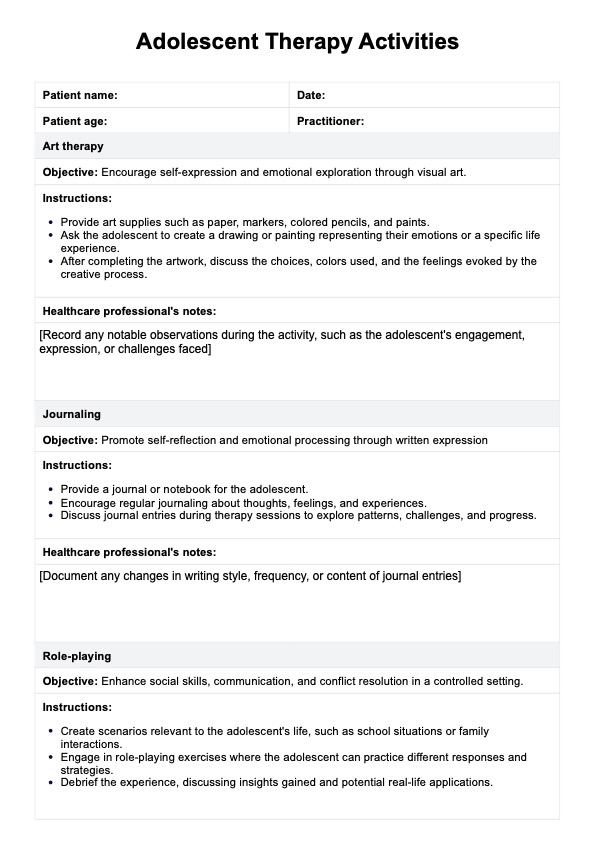Adolescent therapy activities are typically tailored for individuals between the ages of 12 and 18, encompassing the transitional period of adolescence. However, the specific activities can also be adapted to suit the developmental needs of younger or older individuals.

Adolescent Therapy Activities PDF
Incorporate these practical adolescent therapy activities into your practice with our free PDF template.
Adolescent Therapy Activities PDF Template
Commonly asked questions
Incorporating adolescent therapy activities into practice or parenting involves understanding the unique needs of adolescents and selecting activities that align with their developmental stage and challenges. Therapists and caregivers can start by exploring various activities, such as art therapy, mindfulness exercises, and group discussions, and adapting them to suit the adolescent's needs.
Incorporating adolescent therapy activities into treatment or parenting can yield numerous benefits, including improved emotional regulation, social skills, enhanced communication skills, and increased self-awareness. These activities provide adolescents valuable tools to navigate challenges, build resilience, and promote positive mental health outcomes.
EHR and practice management software
Get started for free
*No credit card required
Free
$0/usd
Unlimited clients
Telehealth
1GB of storage
Client portal text
Automated billing and online payments











